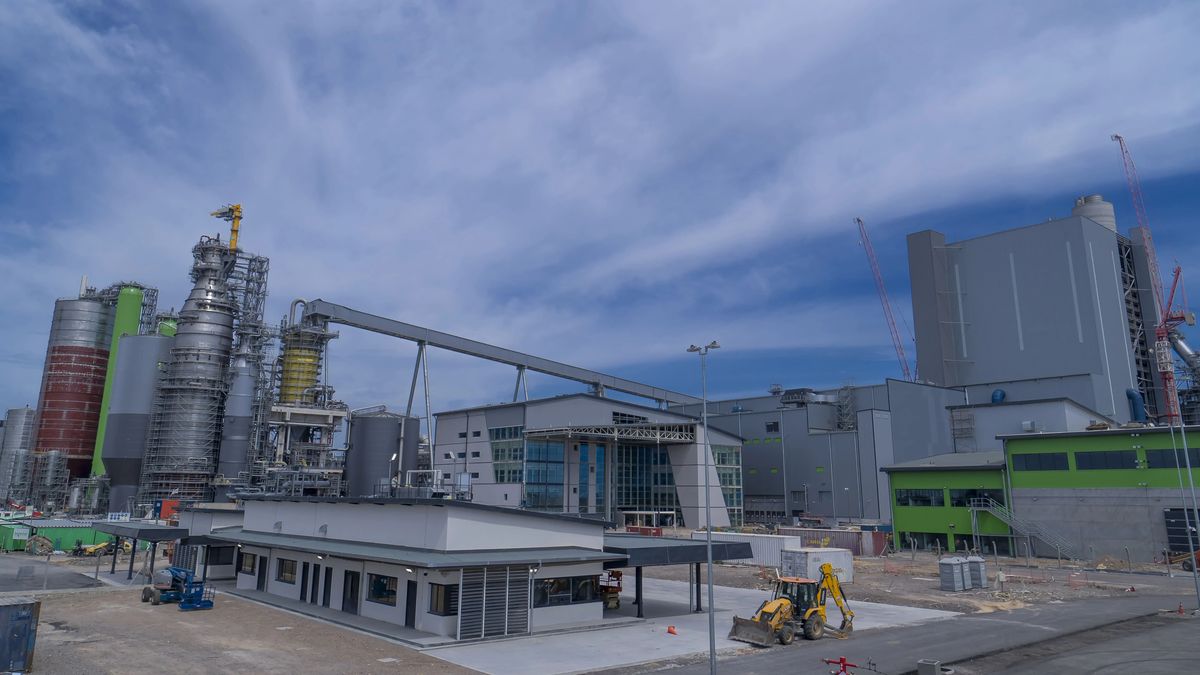UPM 2 Paso de los Toros It has already started operating and the company gave a press conference with the aim of putting on the table some of the economic and project data that characterizes the pulp mill that promises progress for Uruguay; however, the environmental issue continues to be an issue that was not entirely clear and that has environmental organizations on alert.
According to UPM’s senior vice president of project, Petri Hakanen, This has been the largest investment by the company, as well as the largest investment in the Finnish forestry sector, and the country chosen was Uruguay. Negotiations began when in July 2016 the company expressed intentions to invest in the country, while in 2019 the plan was signed that led to the start of a project that ends today.
For his part, the businessman highlighted during the exhibition he attended scope.com the willingness of the Uruguayan government, led by Luis Lacalle Poualthough it regretted the delays caused by the pandemic and the war of Ukraine and Russia.
Numbers that will favor the country
Within the data provided by the company, the investment in the plant cost UPM $3.47 billion. In relation to the effect on the Uruguayan economy, according to data from the authorities, once UPM Paso de los Toros is fully operational, it would increase the country’s GDP by 2%, while it would provide 290 million dollars of salaries net per year Related to this, they estimate $280 million in taxes and social security contributions by year.
On the other hand, they remarked that they generated 7,000 jobsin direct jobs between UPM and contractors, while 10,000 more were added through induced positions in the value chain.
Logistics development for Uruguay
According to company authorities, UPM Paso de los Toros is located in the center of the country, this contributed to a further regional development and made it possible to improve the competitiveness of the agro-export sector and services. This can be seen through infrastructure transformation, especially in accesses and routes, which helped to improve the logistics connecting the center of the country with the maritime exits of Uruguay. Along with the routes, the train system was reconditioned, which is not for the exclusive use of UPM, but rather other sectors will have the possibility of using it, although still not started.
Two piers were also built, one of them deep water. This will allow the boats to come out with a full hold, which will cause the times to destination are reducedas well as allows them to have logistic independence. Since previously, the pulp ships had to be completed in Brazil from other competing companies. According to the authorities, the first shipment would leave in a month. With this, Uruguay would become the fifth exporter of total cellulose worldwide, while bleached eucalyptus cellulose would be the second after Brazil.
The environmental dilemma
While from the company they explain that they will generate more than 160 MW of surplus renewable energy that would go to the national network. As they also argue that environmental impact monitoring was carried out for more than two years with more than 600,000 monthly environmental monitoring dataenvironmental organizations are against it.
The most recent case was Environmental Citizen Assembly of Gualeguaychú who assured that the start-up of the new paper mill “is a environmental catastrophe, but also social” when the liquid effluents drain into the Negro River, which then flows into the Uruguay. “The reaction of the Uruguayan people is really alarming and important, demanding an attitude that is increasingly similar to our claim,” said a representative of the organization.
For his part, he Observatory of Multinationals in Latin America (OMAL) issued a report in which it assured that there will be contamination “even keeping the emission levels within the limits that they themselves set.” “The accumulation of pollutants will transform the region with severe losses in the quality of life, land depreciation and economic ventures, and deterioration of the health of the inhabitants of the region,” they detailed.
In 2006, Argentina appeared before the International Court of Justice in The Hague for the installation by the Uruguayan Government of the first European pulp mill on the Uruguay River, shared with Argentina. Since then, neighbors and the Environmental Citizen Assembly of Gualeguaychú have carried out marches and activities, and will carry out the next sunday april 30 a new mobilization to the General San Martín international bridge.
Source: Ambito




